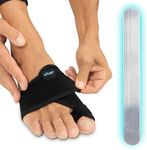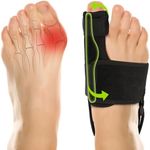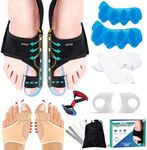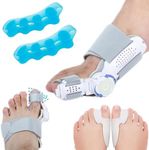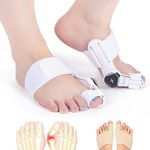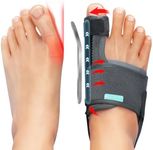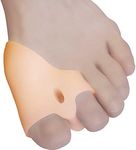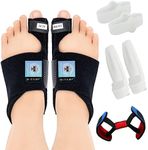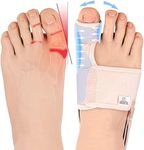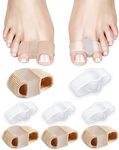Buying Guide for the Best Bunion Correctors
Choosing the right bunion corrector can make a big difference in your comfort and foot health. Bunion correctors are designed to help realign your big toe, relieve pain, and prevent further progression of bunions. Since everyone's feet and bunion severity are different, it's important to consider your specific needs, daily activities, and comfort preferences when selecting a product. Understanding the key features will help you find a corrector that fits well, feels comfortable, and supports your lifestyle.Type of CorrectorBunion correctors come in several types, such as splints, sleeves, pads, and toe separators. Splints are usually more rigid and provide strong alignment, often used at night. Sleeves and pads are softer, more flexible, and can be worn during the day inside shoes. Toe separators focus on keeping the toes apart and can be used with or without shoes. If you need strong correction and don't mind wearing something bulkier at home, a splint might be best. For all-day comfort and use in shoes, sleeves or pads are more suitable. Your daily routine and when you plan to wear the corrector should guide your choice.
MaterialThe material of a bunion corrector affects both comfort and durability. Common materials include soft fabrics, gel, silicone, and plastic. Soft fabrics and gel are gentle on the skin and good for sensitive feet, while silicone offers flexibility and easy cleaning. Plastic is used in more rigid splints for stronger correction. If you have sensitive skin or plan to wear the corrector for long periods, look for soft, breathable materials. For stronger support, a firmer material may be better. Think about your skin sensitivity and how long you’ll wear the corrector each day.
AdjustabilityAdjustability refers to how much you can customize the fit of the corrector. Some correctors have straps or Velcro to tighten or loosen as needed, while others are slip-on and come in fixed sizes. Adjustable correctors are helpful if your feet swell or if you want a more personalized fit. If you have trouble finding products that fit well or if your foot size changes during the day, look for adjustable options. If your foot size is stable and you prefer simplicity, a fixed-size corrector may be sufficient.
Size and FitGetting the right size is crucial for effectiveness and comfort. Some correctors are one-size-fits-all, while others come in multiple sizes. A corrector that is too tight can cause discomfort, while one that is too loose may not provide enough support. Measure your foot and check the sizing guide before buying. If you have wide or narrow feet, look for products that mention compatibility with your foot shape. The right fit should feel snug but not restrictive, and should stay in place during use.
Intended Use (Day or Night)Some bunion correctors are designed specifically for nighttime use, while others are made for wearing during the day. Nighttime correctors are often bulkier and provide stronger correction since you don’t need to walk in them. Daytime correctors are slimmer and designed to fit inside shoes. If you want to address your bunion while you sleep, choose a nighttime model. If you need relief and support throughout the day, look for a daytime option that fits comfortably in your footwear. Your daily schedule and when you experience the most discomfort should help you decide.
Ease of CleaningSince bunion correctors are worn on your feet, they can get dirty or sweaty. Some are machine washable, while others need to be hand-washed or wiped clean. If you plan to wear your corrector often, especially during physical activity, choose one that is easy to clean and dries quickly. This will help maintain hygiene and extend the life of the product.
